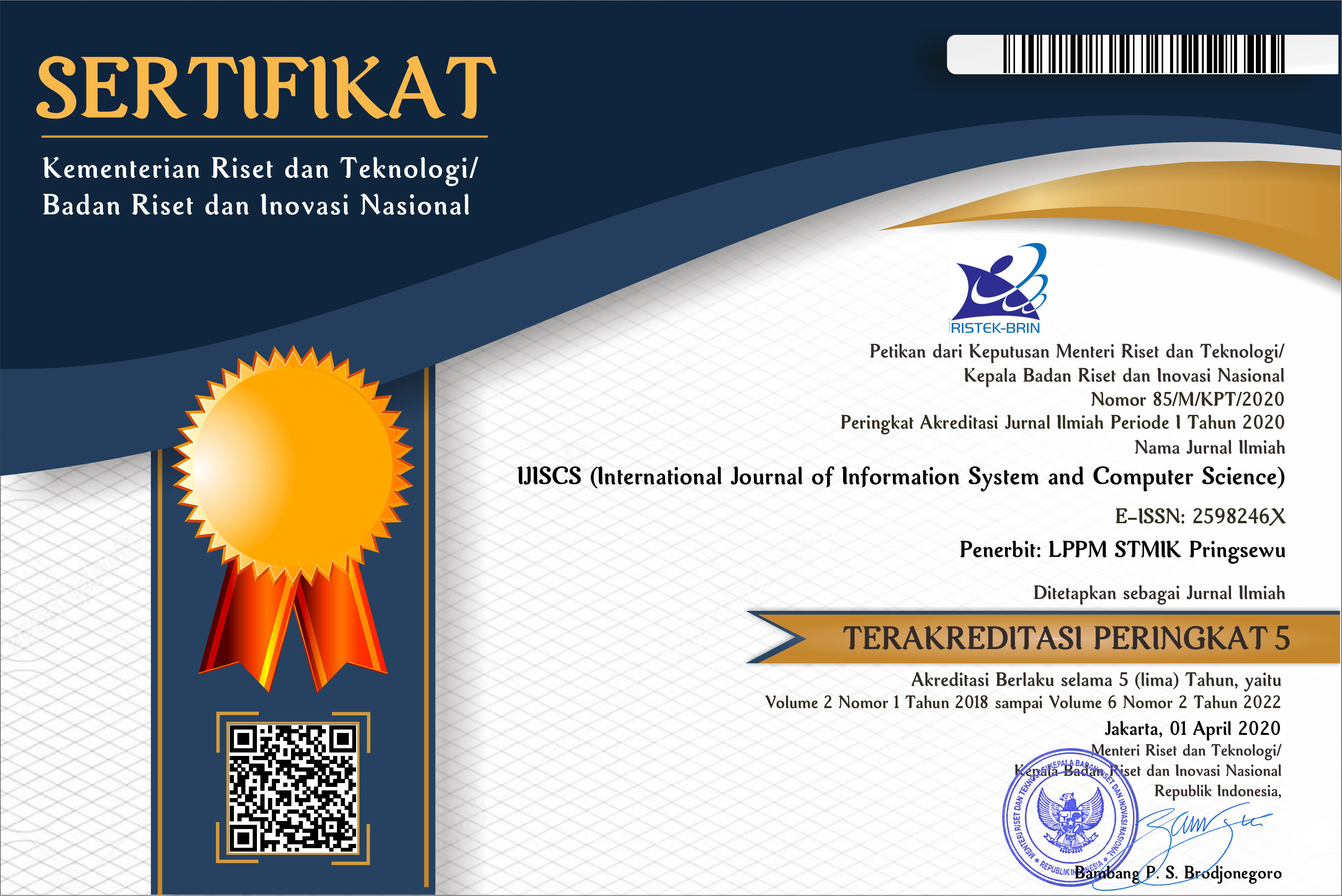APPLICATION ARABIC LEARNING BASED ON MULTIMEDIA USING ASYNCHRONOUS METHOD
(1) Universitas Mercu Buana
 Corresponding Author
Corresponding Author
Abstract
Every school has different featured programs but it has similar goals to educate the nation based on faith and piety on Quran and As-Sunnah. Daily conversation will often be used between the school and the student's parents, both basic and later. To obtain maximum results in the learning process, it is necessary to use Arabic communication between the parents and the students outside the school. There are Parents difficulties to speak Arabic daily conversation to support the teaching and learning process at school and home. There is a deadlock between parents and students due to parents' lack of understanding in Arabic. How to helping the realization of the Arabic learning process given to students outside the school environment by repeating the learning process with parents with multimedia application tools and building Arabic learning applications by using asynchronous based multimedia applications.
Keywords
References
Kurnaengsih, “Konsep Sekolah Islam Terpadu (Kajian Pengembangan Lembaga Pendidikan Islam di Indonesia),” Jurnal Pendidikan dan Studi Islam Risalah; ISSN: 2085-2487, vol. 1, no. 1, 2015.
S. Haningsih, “Peran Strategis Pesantren, Madrasah, dan Sekolah Islam di Indonesia,” Jurnal Pendidikan Islam el-Tarbawi, vol. 1, no. 1, pp. 27-39, 2008.
W. Gunawan dan H. D. Wijaya, “An Application of Multimedia for Basic Arabic Learning Using Fisher- Yates Shuffle Algorithm on Android Based,” Scholars Bulletin; ISSN 2412-9771 (Print) |ISSN 2412-897X (Online) , vol. 5, no. 7, pp. 347-355, 2019.
S. Muyaroah dan M. Fajartia, “Pengembangan Media Pembelajaran Berbasis Android dengan Menggunakan Aplikasi Adobe Flash CS 6 pada Mata Pelajaran Biologi,” Innovative Journal of Curriculum and Educational Technology: p-ISSN 2252-7125. e-ISSN 2502-4558, 2017.
T. J. Ellis, “Multimedia Enhanced Educational Products as a Tool to Promote Critical Thinking in Adult Students,” Journal of Educational Multimedia and Hypermedia, vol. 10, no. 2, pp. 107-123, 2001.
A. Ratnasari and W. H. Haji, "Developing Interface Design of Interactive Multimedia for Learning English in Senior High School," International Journal of Scientific Research in Computer Science, Engineering and Information Technology (IJSRCSEIT), ISSN: 2456-3307, vol. 3, no. 6, pp. 317-323, 2018.
H. D. Wijaya and Y. Devianto, "Application of Multimedia in Basic English Vocabulary Learning with the ADDIE Method," International Journal of Computer Techniques (IJCT), ISSN :2394-2231, vol. 6, no. 1, pp. 57-63, 2019.
A. Cherid, “Asymmetric and Symmetric Cryptography to Secure Social Network Media Communication: The Case of Android-Based E-Learning Software,” International Research Journal of Computer Science (IRJCS), ISSN: 2393-9842, vol. 5, no. 1, pp. 1-8, 2018.
H. Kettani, “Muslim Population in Asia,” Proceedings of the 2009 International Conference on Social Sciences and Humanities, ISBN 978-1-84626-xxx-x, pp. xxx-xxx, 2009.
K. Hafid, “Relevansi Kaidah Bahasa Arab dalam Memahami Al-Quran,” Tafsere, vol. 4, no. 2, pp. 193-205, 2016.
KBBI, "Kamus Besar Bahasa Indonesia," Departemen Pendidikan Nasional Republik Indonesia, 14 February 2019. [Online]. Available: https://kbbi.kemdikbud.go.id/. [Accessed 14 February 2019].
Article Metrics
Abstract View : 252 times
: 252 times Download : 43 times
Download : 43 times
DOI: 10.56327/ijiscs.v4i2.894
Refbacks
- There are currently no refbacks.






